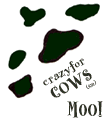|
|
|
|
|
|
|
Cheese, Part 1:
- Cheese has been made since ancient times. Milk from cows, and possibly other animals, was
made into cheese by approximately 1000 BC.
- The ancient Greeks and Romans, as well as the early people of northern Europe, all valued cheese.
- Methods for making cheese have often been kept secret.
- Cheese is important as a preservation technique.
- Cheese is made mostly of the curd that forms when milk curdles, or coagulates.
- When milk coagulates, it releases whey, a waterly fluid, leaving the curd, or fresh cheese.
- The curd is a semi-solid substance, formed by the main milk protein, casein, when enough
lactic acid is produced by microorganisms (present in the milk) acting upon lactose (milk sugar).
- An enzyme called rennin can be used to cause the curd to form.
- When the curd forms, it contains most of the fat, casein, and other water-insoluble substances,
plus a small amount of whey.
- It takes about 10 volumes of milk to get 1 volume of cheese.
Source: http://www.britanica.com, Entry Cheese.
|
|



